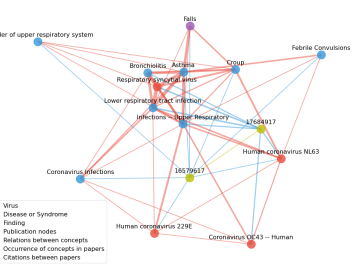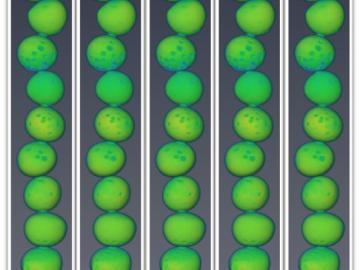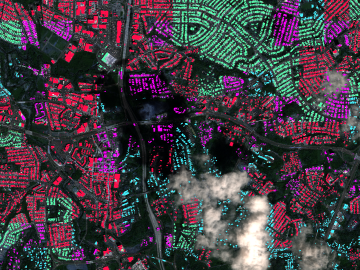
Filter News
Area of Research
- Advanced Manufacturing (1)
- Biology and Environment (18)
- Computational Engineering (2)
- Computer Science (5)
- Energy Science (18)
- Fusion and Fission (2)
- Fusion Energy (6)
- Isotopes (3)
- Materials (8)
- Materials for Computing (1)
- Mathematics (1)
- National Security (1)
- Neutron Science (24)
- Nuclear Science and Technology (7)
- Nuclear Systems Modeling, Simulation and Validation (1)
- Supercomputing (6)
News Type
News Topics
- (-) Advanced Reactors (13)
- (-) Artificial Intelligence (16)
- (-) Clean Water (14)
- (-) Environment (48)
- (-) Isotopes (5)
- (-) ITER (3)
- (-) Neutron Science (27)
- 3-D Printing/Advanced Manufacturing (34)
- Big Data (17)
- Bioenergy (17)
- Biology (21)
- Biomedical (11)
- Biotechnology (4)
- Buildings (21)
- Chemical Sciences (13)
- Composites (11)
- Computer Science (42)
- Coronavirus (11)
- Critical Materials (12)
- Cybersecurity (3)
- Emergency (1)
- Energy Storage (32)
- Exascale Computing (1)
- Fossil Energy (1)
- Frontier (1)
- Fusion (9)
- Grid (22)
- High-Performance Computing (12)
- Hydropower (6)
- Irradiation (2)
- Machine Learning (14)
- Materials (36)
- Materials Science (34)
- Mathematics (3)
- Mercury (3)
- Microscopy (11)
- Molten Salt (5)
- Nanotechnology (12)
- National Security (3)
- Nuclear Energy (19)
- Partnerships (2)
- Physics (4)
- Polymers (10)
- Quantum Computing (5)
- Quantum Science (12)
- Security (1)
- Simulation (9)
- Space Exploration (10)
- Statistics (1)
- Summit (8)
- Transportation (36)
Media Contacts

A multi-institutional research team found that changing environmental conditions are affecting forests around the globe, leading to increasing tree death and uncertainty about the ability of forests to recover.

ITER, the world’s largest international scientific collaboration, is beginning assembly of the fusion reactor tokamak that will include 12 different essential hardware systems provided by US ITER, which is managed by Oak Ridge National Laboratory.

Oak Ridge National Laboratory researchers have discovered a better way to separate actinium-227, a rare isotope essential for an FDA-approved cancer treatment.

Scientists have tapped the immense power of the Summit supercomputer at Oak Ridge National Laboratory to comb through millions of medical journal articles to identify potential vaccines, drugs and effective measures that could suppress or stop the
An international team of scientists found that rules governing plant growth hold true even at the edges of the world in the Arctic tundra.

In the 1960s, Oak Ridge National Laboratory's four-year Molten Salt Reactor Experiment tested the viability of liquid fuel reactors for commercial power generation. Results from that historic experiment recently became the basis for the first-ever molten salt reactor benchmark.

Oak Ridge National Laboratory researchers working on neutron imaging capabilities for nuclear materials have developed a process for seeing the inside of uranium particles – without cutting them open.

A novel approach developed by scientists at ORNL can scan massive datasets of large-scale satellite images to more accurately map infrastructure – such as buildings and roads – in hours versus days.

Nuclear scientists at Oak Ridge National Laboratory have established a Nuclear Quality Assurance-1 program for a software product designed to simulate today’s commercial nuclear reactors – removing a significant barrier for industry adoption of the technology.

As scientists study approaches to best sustain a fusion reactor, a team led by Oak Ridge National Laboratory investigated injecting shattered argon pellets into a super-hot plasma, when needed, to protect the reactor’s interior wall from high-energy runaway electrons.


